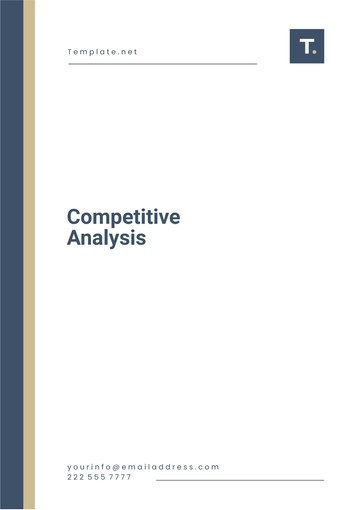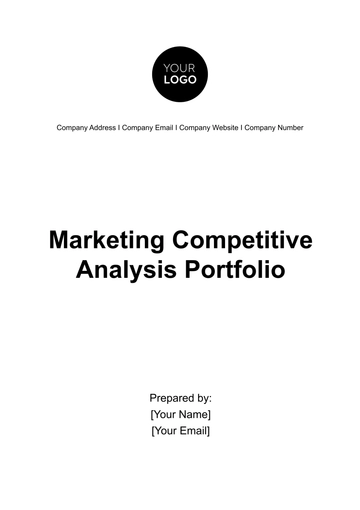Free Salon Social Media Analysis

I. Introduction
In the fast-paced and ever-evolving salon industry, maintaining a robust social media presence is not just an advantage, but a necessity. [Your Company Name] has strategically harnessed the power of various social media platforms to amplify brand visibility and foster meaningful engagement with both our existing clientele and potential customers.
A. Significance of Social Media
The significance of social media in the salon industry can be understood through the following key points:
Brand Visibility: Social media platforms provide an excellent avenue for salons to showcase their work, highlight their services, and increase their visibility among potential customers. By regularly posting engaging content, salons can attract new clients and keep their brand at the forefront of customers’ minds.
Customer Engagement: These platforms offer a unique opportunity to engage with customers, receive feedback, and build lasting relationships. By responding to comments, sharing user-generated content, and hosting interactive features like polls and Q&As, salons can create a two-way dialogue that fosters customer loyalty.
Market Trends: Social media trends often reflect larger market trends, providing valuable insights for salons to stay ahead of the curve. By staying abreast of popular hashtags, viral challenges, and trending topics, salons can ensure their content remains relevant and engaging.
Competitive Advantage: A strong social media presence can give salons a competitive edge in the crowded beauty industry. By differentiating their brand through unique content and a distinctive voice, salons can stand out from the competition and attract more customers.
Business Growth: Ultimately, effective social media strategies can drive business growth by attracting new customers and retaining existing ones. By tracking metrics like follower growth, engagement rate, and conversion rate, salons can measure the success of their social media efforts and adjust their strategies accordingly.
B. Objective of the Analysis
The primary objective of this analysis is to dissect the effectiveness of our current social media strategies, identify emerging trends in customer engagement, and evaluate the overall impact on business growth. The objectives are as follows:
Strategy Evaluation: We aim to determine which social media practices are yielding the highest returns and identify areas that require improvement. By analyzing metrics like engagement rate and conversion rate, we can assess the effectiveness of our content and identify strategies that are driving results.
Trend Analysis: By identifying and analyzing trends in customer engagement, we can adapt our strategies to meet changing customer preferences. This involves monitoring our social media platforms for shifts in engagement patterns and adjusting our content strategy to align with these trends.
Impact Assessment: By assessing the impact of our social media strategies on business growth, we can make data-driven decisions to optimize our efforts. This involves tracking key performance indicators (KPIs) over time and analyzing this data to understand how our social media efforts are contributing to our business objectives.
II. Methodology
The methodology of this analysis is rooted in a blend of quantitative and qualitative metrics derived from the past six months of social media data across platforms such as Instagram, Facebook, and Twitter.
A. Data Collection
The first step in our methodology involves the collection of data from various social media platforms. This includes:
Instagram Data: We collected data on likes, comments, shares, and follower growth on Instagram. This data provides insights into the level of engagement and reach of our content on this platform. It helps us understand how our audience is interacting with our content and which types of posts are most effective in driving engagement.
Facebook Data: We gathered data on likes, comments, shares, page views, and follower growth on Facebook. This data helps us understand how our content is performing on this platform. It allows us to identify which posts are resonating with our audience and which areas need improvement.
Twitter Data: We collected data on likes, retweets, replies, and follower growth on Twitter. This data gives us an understanding of our performance on this platform. It helps us gauge the effectiveness of our tweets and identify opportunities for increasing engagement.
Cross-Platform Data: We also collected data that spans across all platforms, such as demographic information of our followers and the times they are most active. This data helps us tailor our content to our audience. It allows us to understand who our audience is and when they are most likely to engage with our content.
B. Key Performance Indicators (KPIs)
The next step in our methodology involves the examination of key performance indicators (KPIs). These KPIs include:
Engagement Rates: This KPI measures the level of interaction users have with our content. It is calculated by dividing the total engagement (likes, comments, shares) by the total number of followers. High engagement rates indicate that our content is resonating with our audience and encouraging them to interact with our brand.
Follower Growth: This KPI tracks the increase in the number of followers over a specific period. It is an indicator of the attractiveness of our content and brand. A steady increase in followers suggests that our social media strategies are effective in attracting new audience members.
Content Reach: This KPI assesses the number of unique users who viewed our content. It helps us understand the extent of our content’s visibility. A wide reach indicates that our content is being seen by a large number of users, increasing the potential for engagement and conversions.
Conversion Rates: This KPI gauges the percentage of users who took a desired action (like booking an appointment or purchasing a product) after viewing our content. It is a measure of the effectiveness of our content in driving business results. High conversion rates suggest that our content is not only engaging but also successful in prompting users to take action.
C. Data Analysis Tools
To analyze the collected data, we employed various social media analytics tools. These tools help us:
Gather Data: These tools automate the process of data collection from various social media platforms, saving us time and ensuring accuracy. They allow us to gather large amounts of data quickly and efficiently, ensuring that we have a comprehensive dataset to work with.
Process Data: They help us process the raw data into a format that is easier to analyze. This includes calculating averages, percentages, and growth rates. By processing the data, we can extract meaningful insights and make informed decisions.
Visualize Data: These tools allow us to create charts and graphs that make it easier to understand and interpret the data. Visualizations can highlight trends, patterns, and outliers in the data, providing a clear and concise overview of our performance.
Generate Reports: They enable us to generate comprehensive reports that summarize our findings and insights. These reports provide a detailed overview of our performance, highlighting key metrics and trends.
D. Qualitative Analysis
In addition to the quantitative analysis, we also conducted a qualitative analysis of our social media data. This involved:
Reviewing Customer Feedback: We reviewed comments and messages from our customers to understand their sentiment towards our brand and services. This feedback provides valuable insights into customer satisfaction and areas for improvement.
Analyzing Direct Interactions: We analyzed our direct interactions with customers, such as responses to comments and messages, to assess our customer service and engagement efforts. These interactions can reveal how effectively we are communicating with our audience and addressing their needs and concerns.
Evaluating Content Quality: We evaluated the quality of our content based on factors like creativity, relevance, and alignment with our brand identity. High-quality content can enhance our brand image, engage our audience, and drive business results.
Assessing User Experience: We assessed the user experience on our social media platforms, including the ease of navigation, the clarity of information, and the responsiveness of our pages. A positive user experience can increase engagement, foster customer loyalty, and enhance our brand reputation.
III. Findings and Analysis
Our analysis has yielded a wealth of insights into the performance of [Your Company Name]'s social media strategies across different platforms. These findings are crucial in understanding the current landscape and identifying areas for improvement. The following chart and table present the key metrics for each social media platform:
Metric | |||
|---|---|---|---|
Engagement Rate | 4.5% | 1.8% | 3% |
Follower Growth | 10% | 5% | 20% |
Conversion Rate | 5% | 3% | 2% |
A. Engagement Rate
The engagement rate is a critical indicator of how well our content resonates with our audience. On Instagram, we have an impressive engagement rate of 4.5%, suggesting that our content is effectively capturing the attention of our followers and encouraging them to interact with our posts. However, on Facebook and Twitter, the engagement rates are lower at 1.8% and 3.0% respectively. This indicates that there may be room for improvement in our content strategy on these platforms to boost engagement.
B. Follower Growth
Follower growth is a measure of how effectively we are attracting new followers to our social media platforms. Twitter stands out with a remarkable follower growth rate of 20%, indicating that our content on this platform is attracting a significant number of new followers. Instagram also shows a healthy growth rate of 10%. However, Facebook lags behind with a growth rate of just 5%, suggesting that we may need to revisit our strategy on this platform to attract more followers.
C. Conversion Rate
The conversion rate gauges the effectiveness of our content in driving users to take desired actions such as booking an appointment or purchasing a product. Instagram leads the pack with a conversion rate of 5%, indicating that our content on this platform is not only engaging but also successful in prompting users to take action. On the other hand, Facebook and Twitter have lower conversion rates of 3% and 2% respectively, suggesting that our content on these platforms may not be as effective in driving conversions.
The analysis of these metrics provides valuable insights into the performance of our social media strategies. It is clear that while some strategies are highly effective on certain platforms, others may need to be reevaluated and adjusted to better meet our objectives.
These insights are instrumental in making informed decisions to optimize our social media strategies, ultimately enhancing customer interaction and business growth. By understanding the strengths and weaknesses of our strategies on each platform, we can make data-driven decisions to refine our strategies and drive better results. Going forward, [Your Company Name] should continue to harness the strengths demonstrated on each platform while addressing the areas highlighted for improvement, thereby ensuring sustained success in the salon industry.
IV. Actionable Recommendations
Based on the findings of our analysis, we have identified several actionable recommendations to enhance our social media strategies. These recommendations are designed to leverage the strengths and address the weaknesses identified in our analysis.
A. Instagram
Given the high engagement and conversion rates on Instagram, we recommend intensifying our efforts on this platform. This could include:
Targeted Ads: Running targeted ads can help us reach a larger audience and attract new followers. By targeting our ads based on demographics, interests, and behaviors, we can ensure that they reach the most relevant audience.
Influencer Collaborations: Collaborating with influencers can help us reach their followers and increase our brand visibility. We should identify influencers whose audience aligns with our target market and whose brand values align with ours.
Engaging Content: We should continue to create engaging content that resonates with our audience. This includes high-quality images, compelling captions, and interactive features like polls and quizzes.
Regular Posting: Regular posting can help us stay at the top of our followers’ feeds and keep our brand at the forefront of their minds. We should develop a consistent posting schedule and stick to it.
B. Facebook
Our Facebook strategy needs to be revamped to boost engagement and follower growth. We should consider:
Interactive Posts: Interactive posts, such as polls, quizzes, and contests, can encourage users to engage with our content. By making our posts interactive, we can foster a two-way dialogue with our audience and increase engagement.
Frequent Posting: Frequent posting can help us stay visible in our followers’ feeds. We should aim to post at least once a day to keep our audience engaged.
Video Content: Video content is highly engaging and can help us stand out in our followers’ feeds. We should consider incorporating more video content into our Facebook strategy.
User-Generated Content: Sharing user-generated content, such as customer reviews and photos, can help us build trust and foster a sense of community. We should encourage our customers to share their experiences and feature their content on our page.
C. Twitter
While Twitter has shown strong follower growth, we need to explore new content strategies to maintain this momentum and improve conversions. This could include:
Engaging Tweets: We should aim to create tweets that are engaging and encourage interaction. This includes asking questions, sharing interesting facts, and using hashtags to join relevant conversations.
Regular Tweeting: Regular tweeting can help us stay visible in our followers’ feeds and keep our audience engaged. We should develop a consistent tweeting schedule and stick to it.
Twitter Chats: Hosting Twitter chats can help us engage with our audience in real-time and build a sense of community. We should identify topics that are relevant to our audience and host regular Twitter chats to discuss these topics.
Promoted Tweets: Promoted tweets can help us reach a larger audience and attract new followers. We should consider promoting tweets that have performed well organically to maximize their reach.
D. Cross-Platform Strategy
In addition to the platform-specific recommendations, we also have some recommendations that apply across all platforms:
Consistent Branding: We should ensure that our branding is consistent across all platforms. This includes our logo, color scheme, tone of voice, and messaging.
Cross-Promotion: We should cross-promote our social media accounts to encourage our followers on one platform to follow us on others. This can help us increase our reach and engagement across all platforms.
Responsive Customer Service: We should aim to respond to comments and messages promptly. This can help us build relationships with our customers and improve their experience with our brand.
Analytics: We should regularly review our social media analytics to understand how our content is performing and make data-driven decisions.
V. Conclusion
The analysis of [Your Company Name]'s social media strategies in the salon industry has yielded valuable insights and actionable recommendations. It is clear that while some strategies are highly effective on certain platforms, others may need to be reevaluated and adjusted to better meet our objectives.
In the dynamic world of social media, it is crucial for [Your Company Name] to continually monitor and adapt its strategies to stay ahead of the curve. The high engagement rates on Instagram highlight a strong alignment of content with audience preferences, whereas the declining figures on Facebook suggest a potential misalignment. These insights are instrumental in making informed decisions to optimize social media strategies, ultimately enhancing customer interaction and business growth.
Going forward, [Your Company Name] should continue to harness the strengths demonstrated on each platform while addressing the areas highlighted for improvement. By doing so, we can ensure sustained success in the salon industry and continue to grow our online presence. This will involve regular reviews and adjustments of our strategies based on ongoing analysis and changing trends. With a data-driven approach, we can continue to engage our audience effectively and drive business growth.
In conclusion, the power of social media in the salon industry cannot be underestimated. It provides an unparalleled platform for engaging with customers, showcasing services, and driving business growth. By leveraging these insights and recommendations, [Your Company Name] is well-positioned to enhance its social media strategies and achieve continued success in the salon industry.
- 100% Customizable, free editor
- Access 1 Million+ Templates, photo’s & graphics
- Download or share as a template
- Click and replace photos, graphics, text, backgrounds
- Resize, crop, AI write & more
- Access advanced editor
Gain insights into social media performance with our editable Salon Social Media Analysis Template! This analytical solution from Template.net provides a comprehensive overview of your salon's social media presence and engagement. By leveraging the customizable sections and AI Editor Tool, gain insights to ensure informed decision making! Access it immediately!





























